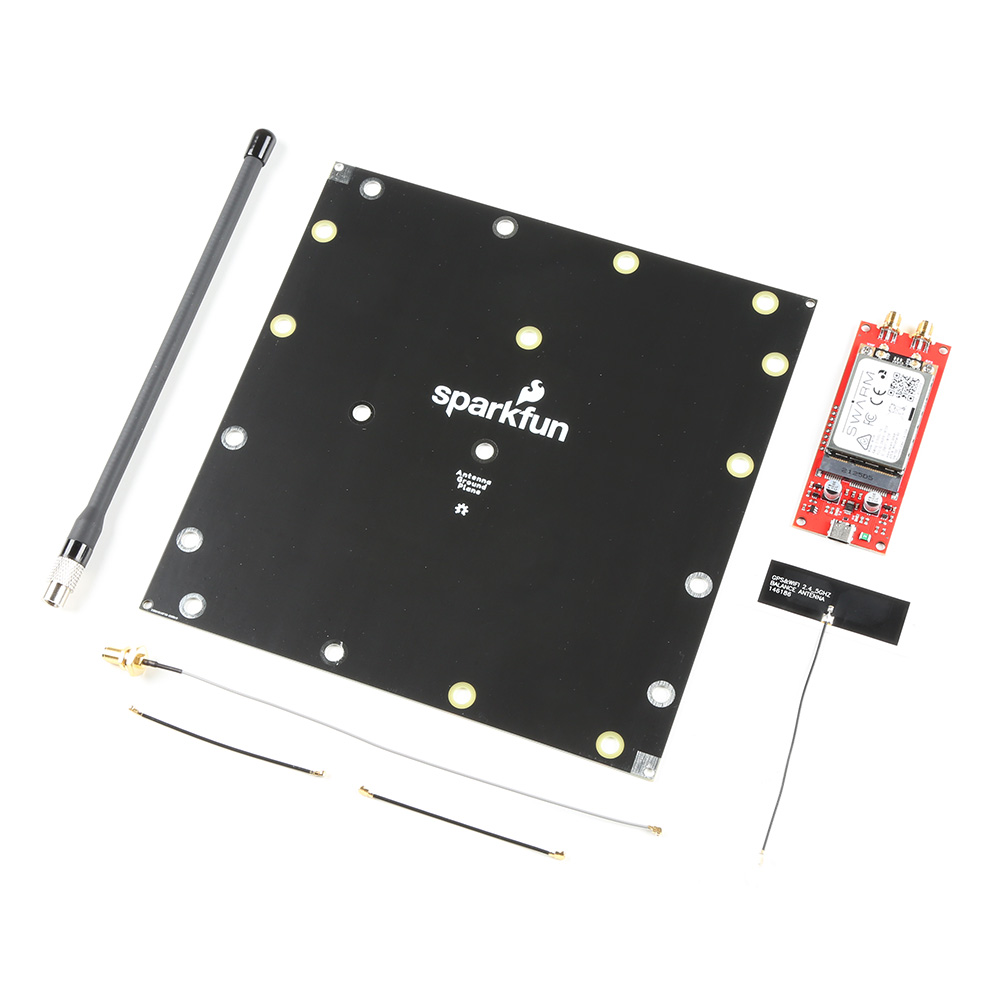SparkFun Satellite Transceiver Kit - Swarm M138
A breakout for the Swarm M138 satellite transceiver.
This breakout allows you to power and communicate with the Swarm M138 using USB 3 or USB-C, or breakout pins.
We've written a Python3 PyQt5 GUI to let you communicate with the modem. You will find it in its own dedicated repo:
You will find the modem manual in the Documents folder. It contains the full list of modem commands and messages.
You can also integrate the satellite transceiver directly into your project; the breakout pads can be used to provide power and access the 3.3V UART TX and RX signals.
Open the two split jumper pads on the bottom of the PCB first, located between the TXO/CH340_RXI and RXI/CH340_TXO pads. Then connect:
- GND to GND on your Arduino board
- VIN to 5V/V_USB on your Arduino board
- TXO to RX on your Arduino board (3.3V only!)
- RXI to TX on your Arduino board (3.3V only!)
Our Swarm Satellite Arduino Library makes communicating with the modem really easy.
- /Hardware - contains the Eagle PCB, SCH and LBR design files
- /Documents - contains the datasheet etc. for the Swarm M138
- LICENSE.md - contains the licence information
- SparkFun Swarm M138 GUI - dedicated repo for the Swarm M138 GUI
This product is open source!
Please review the LICENSE.md file for license information.
If you have any questions or concerns on licensing, please contact technical support on our SparkFun forums.
Distributed as-is; no warranty is given.
- Your friends at SparkFun.

